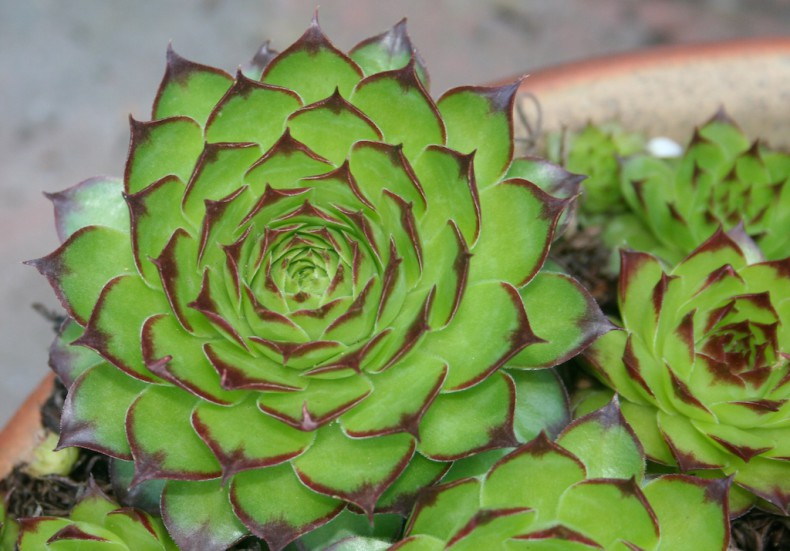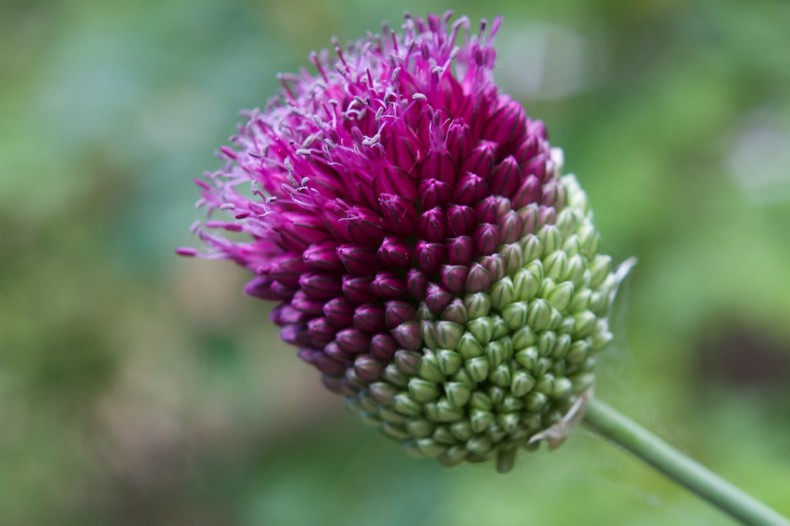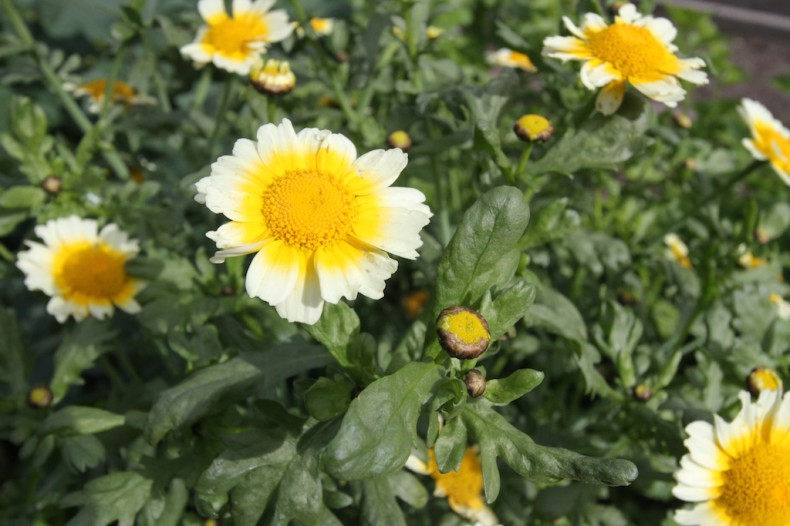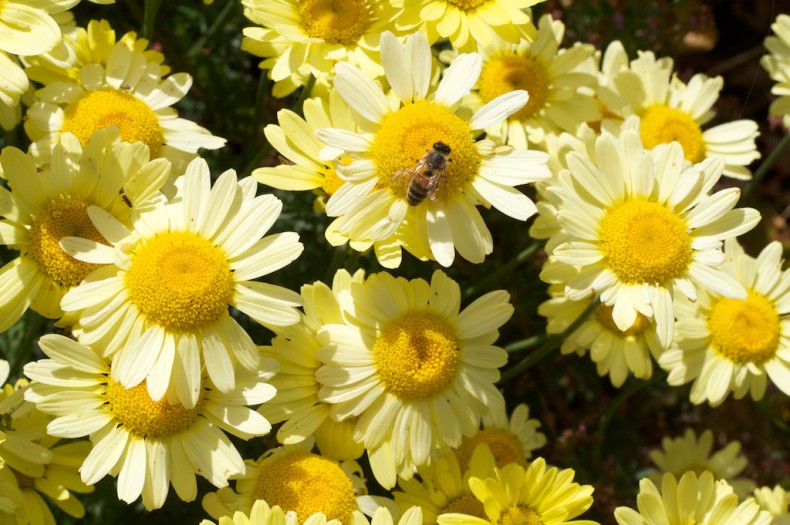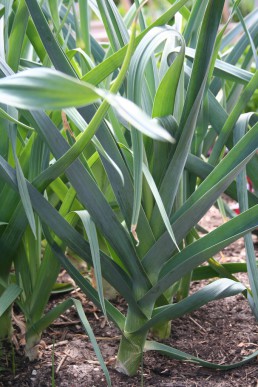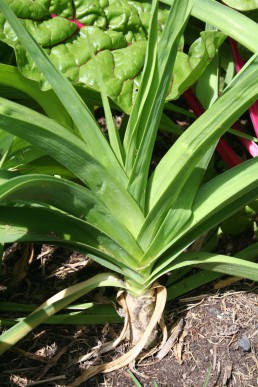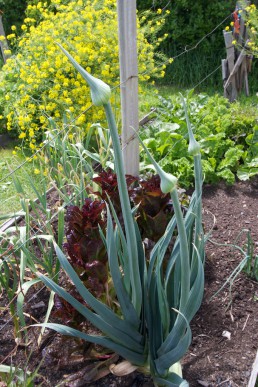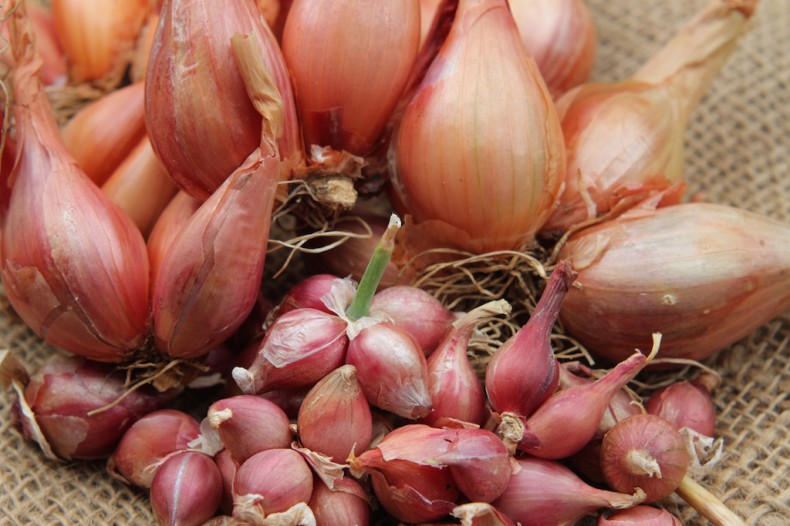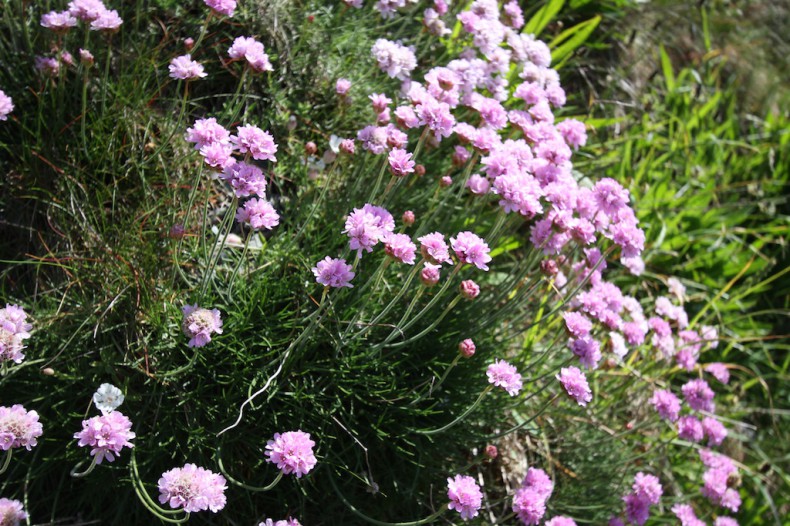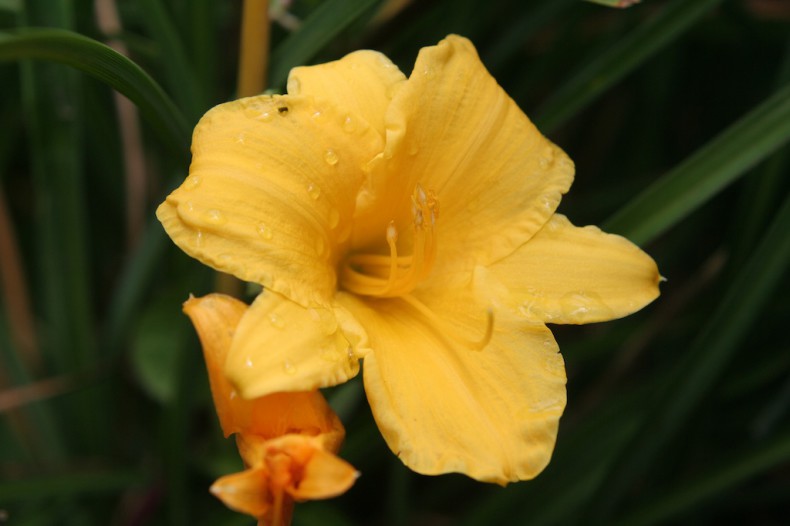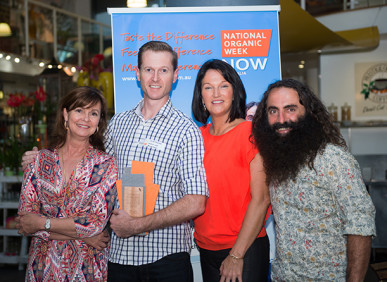Even the best gardener needs a bit of luck sometimes. So we lesser mortals who sometimes struggle to keep our favourite plants alive might do well to consider some of the practises of early gardeners. In ancient times every care was taken to make sure no evil would enter the garden. Gardens in those days were also much more practical, as they often supplied all the the essential food and the cures so it was important that they were productive. If your garden failed you might well starve. Many herbs were supposed to repel devils and witches but the Romans went a step further and would “place the skull of a mare or she-ass that hath been covered” and they believed that this would ensure that their gardens were fruitful. It is still possible to see a carved horses head over a gateway into old gardens today. Continue Reading
Over the last couple of years I have been more than a little preoccupied with one species in the Allium family, namely garlic (Allium sativum). So much so that I have created a website all about this fascinating and beautiful vegetable. You can see it here. There are however beautiful ornamental Alliums that also deserve a place in our gardens. The one that is looking elegant in my garden at present is A. sphaerocephalon or drumstick allium. My garden is pretty low on elegance and high on profusion and confusion so it is a very welcome member. Continue Reading
By Penny Woodward
I was leafing through the book I wrote with Pam Vardy, Community Gardens: A Celebration of the People, Recipes and Plants because I had been thinking about refugees and immigrants and how much they have enhanced our lives. Since the new government has been in power (and to some extent the previous government) the rhetoric has again resembled that of the Howard government and the Tampa. It was the events surrounding Tampa that prompted Pam and myself to get together and combine our skills (hers in interviewing and cooking, and mine in gardening and writing) to produce a book that showcases just a few of the very many ways that people from other cultures and countries have added to our lives and lifestyles in Australia. To highlight this, I thought that from time to time by writing about plants that are in the book, I would focus on unusual individual plants that we would not otherwise have available for our gardens or meals. Continue Reading
An organic guide to knowing, growing and using garlic, from Australian Whites and Tasmanian Purples to Korean Reds and Shandongs.
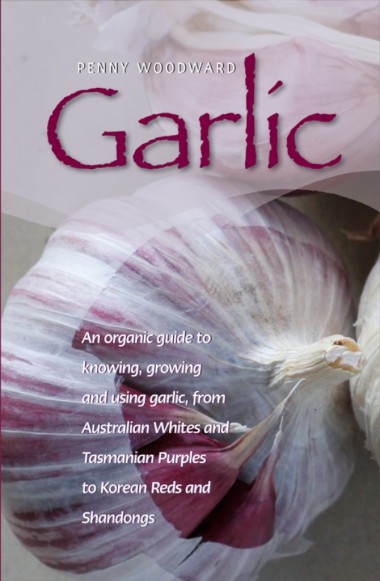
I am thrilled to say that my new book has been released and is in bookshops and can be purchased online from my website shop . If you would like your copy signed to a specific person, then send me an email through the contact page. I’ll be talking about garlic and the book on radio over the coming weeks and there will be reviews in newspapers and magazines, so keep an eye out for them.
The book has taken me three years to write, but has been much longer in it’s gestation. It covers everything from more than 50 different cultivars of garlic, to guidelines for growing organic garlic around the country as well as interviews with twelve Australian garlic growers telling you how and where they grow their garlic. There are also recipes for cooking, preserving and smoking garlic and even making your own black garlic as well as medicinal uses and an extensive list of growers and suppliers.
This book starts to make sense of the confusion surrounding garlic and explains that garlic is not just garlic, it is Creole, Rocambole, Purple Stripe, Turban, Silverskin and more.
These are a couple of short extracts from the book, starting with Garlic Thoughts Continue Reading
By Penny Woodward
I’ve been weeding and cleaning up parts of my garden, ready for some planting and for new spring growth. Now is also a good time (maybe almost too late) to divide perennials. One I love and have been digging and dividing, is dyer’s chamomile. It’s botanical name was Anthemis tinctoria but is now Cota tinctoria. I do understand the need to update botanical names in line with new research, but it does make it really hard for gardeners and garden writers to keep up! Continue Reading
Leeks, Allium porrum, are a great vegetable. They are especially good for people who find onions and garlic too strong, but still enjoy a milder onion flavour. They are biennial vegetables that are usually grown as an annual. They thrive in cold and warm temperate climates and are best planted in autumn and winter. Continue Reading
Tree onions grow well from the sub-tropics to cold temperate regions and autumn and winter are the best time to plant them. They are now botanically classified as Allium x proliferum as they have been shown through genetic testing to be a cross between the common onion (Allium cepa) and the welsh onion (Allium fistulosum). Continue Reading
Thrift (Armeria maritima) was one of the first plants that I grew in my first garden and I have loved it ever since. It is a delightful, tough little perennial that grows as a small clump of tufting, grassy leaves with white, pink or red button flowers on slender stems in spring and summer. Their ideal home is rocky well-drained ground near the coast but they are adapted to a range of different climates and will do well anywhere except in regions with high humidity. So plants grow beautifully in cold and warm temperate regions but are not much good in the sub-tropics and certainly won’t survive in the tropics. Continue Reading
By Penny Woodward
More tough herbs that are easy to grow and will withstand both drought and heat. And they are useful too! Continue Reading
Organic Crop Protectants (OCP) who sell the Eco-organic garden range of garden products has been voted the Best Organic Input Supplier at the 2013 Organic Consumer Choice Awards. The awards are run by The Centre for Organic Research & Education (CORE) as part of National Organic Week which is designed to increase awareness of the benefits of organic products.
It caps off a big year for OCP having won three other major awards earlier in the year. OCP is an Australian firm who work hard to produce organically certified products for the home gardener. I have used, like and recommend their HIPPO enhanced pest oil called Eco-oil (it not only kills pests but the natural oils included in the spray attract beneficial insects) and Eco-fungicide (made from activated potassium bicarbonate). I like the way they are open about their products and provide plenty of information and MSDS’s on their website.
I asked Steve Falconi, the General Manager of OCP why he sees organic approaches to gardening and farming as crucial to our world? Continue Reading

